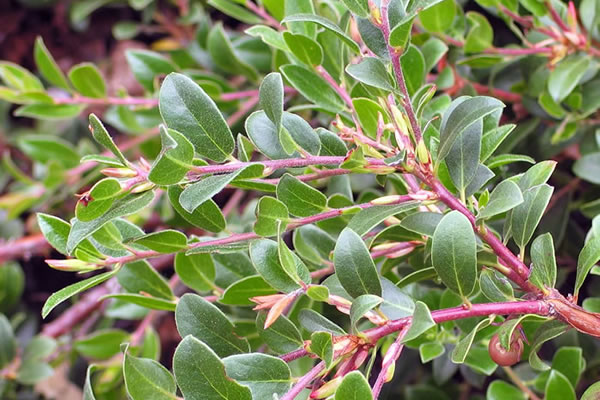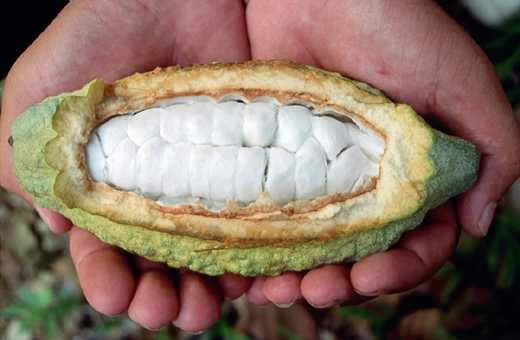Beverages

Humans have long enjoyed the beverages and juices that can be prepared from plants, plant parts, and fruits. Many of these beverages have become a part of everyday modern life. Many people drink these beverages not only for their flavor, but also for the boost, they provide. Of these beverages, coffee, tea, and cocoa are the most abundant worldwide. These beverages are stimulating because they all include the major central nervous system stimulant caffeine.
Stimulating Beverages
Cocoa
The tasty secret of the cacao (kah KOW) tree was discovered 2,000 years ago in the tropical rainforests of the Americas. The first people known to have made chocolate were the ancient cultures of Mexico and Central America. These people, including the Maya and Aztec, mixed ground cacao seeds with various seasonings to make a spicy, frothy drink. It was first introduced to Europeans following Cortes’ visit to the Aztec royal court. It was not well received until later when the hot spices were deleted and sugar and cinnamon were added.
While cocoa is an important New World contribution to the beverage world, the eating of chocolate far surpasses the popularity of drinking cocoa. Cacao plants are small trees that bear their flowers and fruits directly on their trunks. The pods of this tree contain seeds that can be processed into chocolate. Chocolate is made from the fermented seeds of the cacao that are then roasted. Shells of the cacao fruit can be pressed to yield cocoa butter. Cocoa butter can be made into white chocolate by adding milk.
To learn more about cacao and sustainable growing, visit the World Cocoa Foundation website.
Peruvian Cacao Collection Trip Yields Treasures
In the chocolate world, the fastest growing segment of the industry is fine-flavor, high-end chocolates. The source of these specialized confections has been largely limited to small regions of Venezuela and Ecuador. Collection expeditions in 2008 and 2009 through the Amazon Basin of Peru uncovered the exceptional find, along with other distinctive new populations of cacao. Agricultural Research Service researchers at the Sustainable Perennial Crops Laboratory (SPCL) and the Systematic Mycology and Microbiology Laboratory (SMML) in Beltsville, Maryland, and Peruvian collaborators came away with hundreds of new cacao tree samples from these trips.
Read more about the Peruvian Cacao Collection Trip (PDF, 3.7 MB)…
 Fortunato No. 4 chocolate, a fine-flavor product made from the Pure Nacional type of cacao identified in northern Peru.
Fortunato No. 4 chocolate, a fine-flavor product made from the Pure Nacional type of cacao identified in northern Peru.
Coffee
Coffee is one of the world’s most important commodities traded annually on the international market. Some sources indicate coffee is second only to oil. Coffee, Coffea arabica, is the most important product of the Rubiaceae, or madder, family. The earliest recorded records of coffee are from Ethiopia, where natives chewed leaves and fruits gathered from wild trees. These trees blossomed in an area called "Kaffa" and the trees were called Kafa trees, which may well be the root word for coffee.
- The first recorded use of coffee leaves was in Ethiopia, instead of a brewed beverage. Native peoples mixed the leaves with coffee fruits and fat and this was taken on long hunts as a survival staple.
- Coffee is well protected from insect herbivory because of the caffeine it produces.
- Many coffee species prefer to grow as understory shrubs. As such, much of the native rain forest trees were left in place; thus, coffee plantations have served as a refuge for native plants and animals.
- Over 900,000 kg (2 million pounds) of caffeine is produced from decaffeinated coffee and tea in the United States each year. Another 900,000 kg is imported each year. Three–fourths of this caffeine is used in soft drinks and the rest is added to head or cold medicines.
To learn more about coffee, its habitat, and sustainable growing, visit the Coffee & Conservation website.
Tea
Although tea may not be as important as an international commodity, more people throughout the world likely consume it.
The origin of tea, Camellia sinensis, is most likely China. Green tea is made from unfermented tea leaves, while black tea is processed from fermented leaves. Oolong tea falls between green and black tea, undergoing a short fermentation process that results in a tea that contains less caffeine than black tea. White tea is made from the fresh buds of Camellia sinensis, and is the least processed and most expensive tea.
Camellia is a member of the Theaceae or tea family. Tea tree oil is not made from Camellia, but is concentrated plant oil from the leaves of a tree native to Australian coastal areas. The scientific name is Melaleuca alternifolia, which is a member of the myrtle family, Myrtaceae. The oil is distilled through a steam process and is used on the skin as an herbal remedy.
The spicy, aromatic leaf, bark, and root of the North American native, sassafras (Sassafras albidum), are used as a flavoring, as a traditional home medicine, and as a tea. The bark yields oil of sassafras, once the characteristic ingredient of root beer.
Yerba Maté
Ilex paraguariensis is a South American shrub or tree in the holly family that is the source of the legendary Yerba Maté, used to make a stimulant tea beverage. It is the national drink of several Latin American countries and is often used as a preferred alternative to coffee. Maté is best known as a coffee substitute that provides energy without the jittery side effects of coffee.
Other Beverages
Lemonade Berry
 Lemonade berry used to make homemade lemonade.
Lemonade berry used to make homemade lemonade.
Some western Native Americans used the fruits of the lemonade berry, Rhus trilobata, traditionally to make a refreshing drink. Lemonade berry, a shrub, is known by several common names that include sumac, skunk bush, and sour berry.
Manzanita
 How about a refreshing cup of Manzanita cider made from crushed berries?
How about a refreshing cup of Manzanita cider made from crushed berries?
Manzanitas are evergreen shrubs in the genus Arctostaphylos. They are found primarily in the western US, many being endemic to California. Smooth, orange, or red bark and stiff, twisting branches, characterize manzanitas. The word manzanita is the Spanish diminutive of manzana (apple). A literal translation would be little apple. The dry, mealy berries are edible, though not particularly tasty. Traditional use has been to make a cooling, cider-like drink from the crushed berries.





